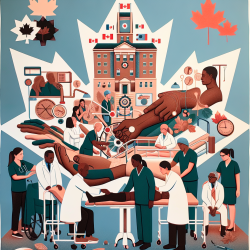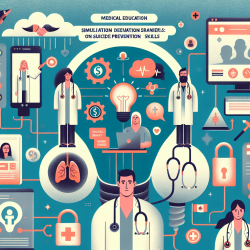Introduction
In the ever-evolving landscape of education and therapy, the transition to online platforms has been accelerated by global challenges such as the COVID-19 pandemic. While this shift presents unique challenges, it also offers unprecedented opportunities for innovation and improvement. The research article titled Using What’s at Hand: The Creation of an Online Microbiology Outreach Program provides valuable insights that can be adapted to enhance online therapy services, particularly for children in schools.
Lessons from Microbiology Outreach
The study describes an online microbiology outreach program designed for high school students, which successfully engaged students in learning about microbiology and antimicrobial resistance. Key elements of this program can be adapted to improve online therapy practices:
- Interactive Learning: The program emphasized interactions between instructors and students, as well as peer-to-peer interactions. In online therapy, fostering a similar environment can enhance engagement and outcomes.
- Diverse Learning Techniques: Incorporating various learning modalities—such as videos, discussions, and interactive activities—can cater to different learning styles, making therapy sessions more effective.
- Feedback and Adaptability: Continuous feedback from students was utilized to improve the program in real-time. In therapy, collecting feedback from children and adapting strategies accordingly can lead to better results.
Implementing These Strategies in Online Therapy
For practitioners in speech-language pathology, these strategies can be particularly beneficial:
- Use of Technology: Leverage tools like Google Classroom and other online platforms to create a structured and interactive learning environment. This can help maintain engagement and facilitate communication between therapists and students.
- Structured Sessions: Design therapy sessions with clear objectives and a mix of synchronous and asynchronous activities. This approach allows flexibility for students and ensures that learning is consistent and goal-oriented.
- Feedback Mechanisms: Establish channels for regular feedback from students and caregivers. This can help identify areas for improvement and ensure that therapy sessions are meeting the needs of the children.
Encouraging Further Research and Innovation
The success of the online microbiology outreach program underscores the importance of research and innovation in educational and therapeutic settings. Practitioners are encouraged to explore further research in online therapy methodologies and consider pilot programs to test new strategies. Collaboration with educational institutions and leveraging publicly available resources can also enhance the quality and reach of online therapy services.
Conclusion
Adapting successful strategies from educational programs like the online microbiology outreach can significantly enhance online therapy services. By focusing on interactive learning, diverse techniques, and continuous feedback, practitioners can create engaging and effective therapy experiences for children. As we continue to navigate the challenges and opportunities of online platforms, data-driven decisions and innovative approaches will be key to achieving great outcomes for children.
To read the original research paper, please follow this link: Using What’s at Hand: The Creation of an Online Microbiology Outreach Program.










